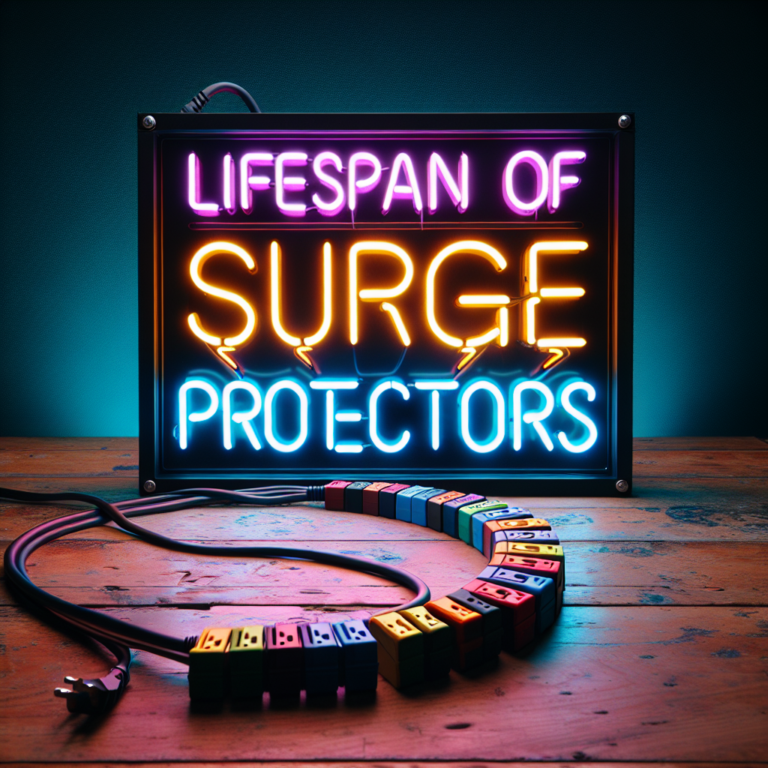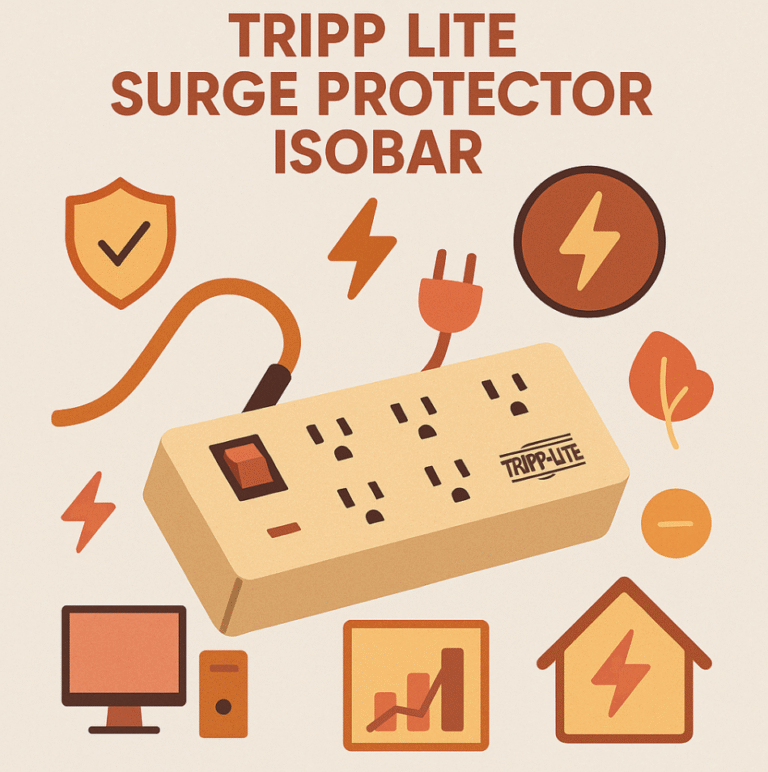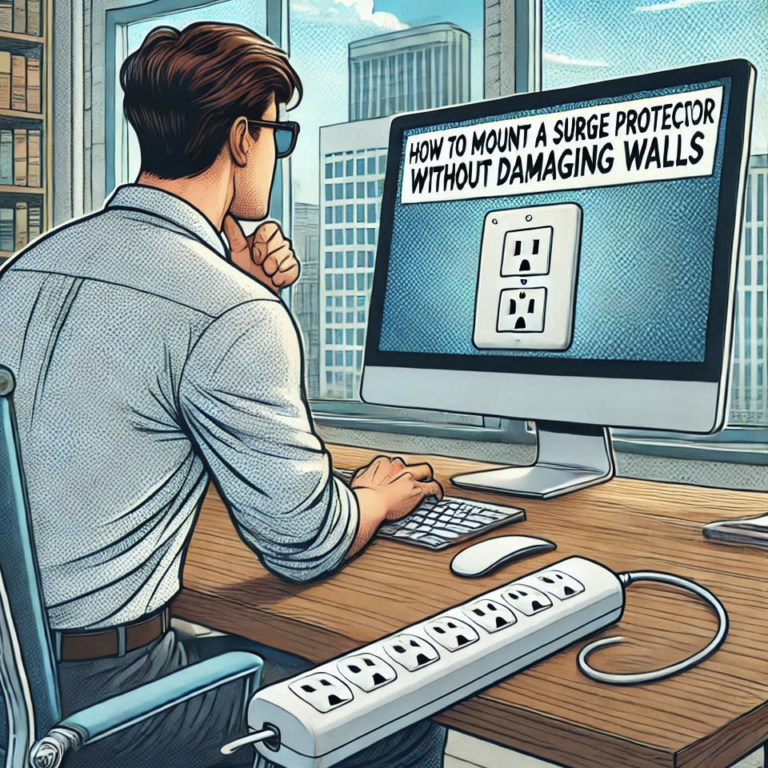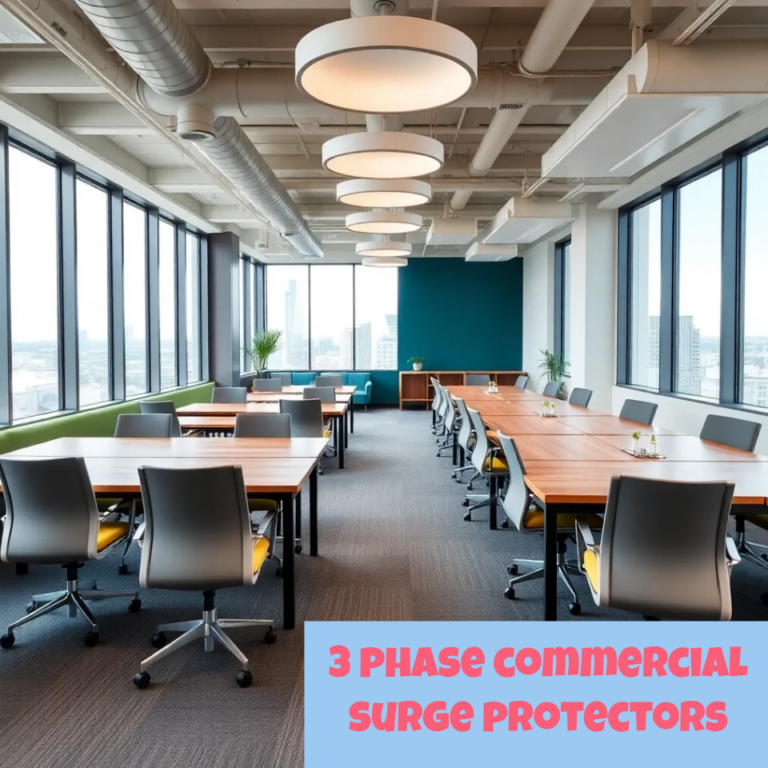Whole House or Individual Surge Protectors: Which One Do You Need

Power surges can strike without warning, putting your electronics and appliances at risk. Choosing the right surge protection is essential to safeguard your home and valuable devices. When considering whole house surge protector vs individual surge protectors, it’s important to understand their roles.
A whole house surge protector shields your entire electrical system from major power spikes, while individual surge protectors add an extra layer of defense for sensitive electronics like computers and TVs. Together, they create a two-tiered approach that ensures comprehensive protection.
This combination stops surges at the source and protects high-value items, giving you peace of mind and saving you from costly repairs.
What Are Power Surges and Why Do They Matter?
Understanding Power Surges
What is a power surge?
A power surge happens when there’s a sudden spike in electrical voltage. This spike can overwhelm your home’s electrical system, sending more electricity than your devices can handle. Think of it as a tidal wave of energy crashing into your electronics.
Even a brief surge can cause significant damage, leaving your appliances or gadgets unusable.
Common causes of power surges
Power surges can occur for several reasons. Lightning strikes are one of the most dramatic causes, sending millions of volts through power lines. Electrical overloads, such as plugging too many devices into one outlet, can also trigger surges. Faulty wiring in your home may create unstable electrical currents, leading to frequent surges.
Even routine activities, like turning on large appliances, can cause minor surges that build up over time.
The Risks of Power Surges
Damage to electronics and appliances
Power surges can wreak havoc on your valuable electronics and appliances. They can fry circuit boards, damage internal components, or even render devices completely useless. Items like TVs, computers, and refrigerators are especially vulnerable. Without proper surge protection, you risk losing these expensive items in an instant.
Financial and safety implications of unprotected systems
The financial impact of power surges can be staggering. Replacing damaged electronics or repairing appliances can cost hundreds or even thousands of dollars. Beyond the financial burden, unprotected systems can pose safety risks.
Faulty wiring or damaged devices may lead to electrical fires, endangering your home and family. Investing in surge protection not only saves money but also provides peace of mind.
Whole-House Surge Protectors
How a Whole House Surge Protector Works
Installed at the main electrical panel
A whole house surge protector connects directly to your home’s main electrical panel. This strategic placement allows it to act as the first line of defense against power surges. When a surge occurs, the protector intercepts the excess voltage before it can travel through your home’s wiring.
This proactive approach ensures that your entire electrical system remains shielded from sudden spikes.
Diverts excess voltage away from the home’s electrical system
The device works by redirecting excess voltage away from your home’s wiring. Instead of allowing the surge to reach your appliances, it safely channels the extra energy into the ground.
This process minimizes the risk of damage to your electronics and appliances, keeping your home’s electrical system stable and secure.
Benefits of a Whole-Home Surge Protector
Protects all devices and appliances connected to the home’s electrical system
A whole-home surge protector offers comprehensive protection for every device plugged into your home’s outlets. From your refrigerator to your HVAC system, it safeguards all appliances from voltage spikes.
This eliminates the need for multiple plug-in surge protectors, simplifying your surge protection strategy.
Ideal for large appliances like HVAC systems, refrigerators, and washers
Large appliances are particularly vulnerable to power surges due to their high energy demands. A whole house surge protector ensures these critical systems remain operational, even during electrical disturbances.
By preventing damage, it extends the lifespan of your appliances and saves you from costly repairs or replacements.
Limitations of a Whole House Surge Protector
Limited protection against smaller, localized surges
While a whole house surge protector excels at handling large-scale surges, it may not fully protect against smaller, localized spikes. For instance, surges caused by turning on a hairdryer or microwave might still affect sensitive electronics. Pairing it with plug-in surge protectors can address this gap and provide an extra layer of defense.
Requires professional installation and has a higher upfront cost
Installing a whole house surge protector requires professional expertise. The cost of installation typically ranges from $70 to $700, with the national average being around $300. Although the initial investment is higher than plug-in options, the long-term benefits often outweigh the cost.
Protecting your home’s electrical system and appliances can save you thousands in potential damages.
Individual Surge Protectors
How a Plug-In Surge Protector Works
Protects specific electronics by absorbing excess voltage
A plug-in surge protector acts as a shield for your sensitive electronics. It absorbs excess voltage during a power surge, preventing it from reaching your devices. This protective barrier ensures that your valuable equipment, like computers or TVs, remains safe from sudden electrical spikes.
Unlike whole-house surge protectors, these devices focus on safeguarding individual items, making them an essential part of your surge protection strategy.
Portable and easy to use
Plug-in surge protectors are incredibly user-friendly. You simply plug them into an outlet and connect your devices. Their portability allows you to move them between rooms or even take them on trips. This convenience makes them a practical choice for protecting electronics in various settings, whether at home or in the office.
Benefits of Plug-In Surge Protectors
Affordable and accessible
Plug-in surge protectors are budget-friendly, with prices typically ranging from $20 to $70. High-quality models with advanced features may cost more, but they remain an affordable option for most households.
Their widespread availability means you can easily find one that suits your needs, whether online or at a local store.
Ideal for sensitive electronics like computers, TVs, and gaming consoles
Sensitive electronics, such as gaming consoles, TVs, and computers, require extra protection from voltage spikes. Plug-in surge protectors are designed specifically for these devices, ensuring they remain operational and free from damage. Using them can save you from costly repairs or replacements, especially for high-value gadgets.
Choosing the Right Plug-In Surge Protector
Look for UL certification and joule rating
When selecting a plug-in surge protector, prioritize safety and performance. Look for UL 1449 certification, which ensures the device meets strict safety standards. Check the joule rating to determine its energy absorption capacity.
For small electronics, a rating of 1,000 joules is sufficient. For office equipment, aim for 1,000 to 2,000 joules. For expensive devices like gaming consoles, choose a protector with over 2,000 joules.
Consider additional features like USB ports or power switches
Modern plug-in surge protectors often come with extra features to enhance convenience. USB ports allow you to charge multiple devices simultaneously, while power switches help conserve energy.
Some models also include indicator lights to show whether your devices are protected. These features can make a significant difference in functionality and ease of use.
Whole House Surge Protector vs Individual Surge Protectors
Cost Comparison
Whole house surge protectors have higher upfront costs
A whole house surge protector is a long-term investment. The device itself costs between $70 and $700, with an average price of $300. Professional installation adds another $50 to $100 per hour. While the initial expense may seem high, this solution protects your entire home, saving you from costly repairs or replacements in the future.
Plug-in surge protectors are more budget-friendly
Plug-in surge protectors are a more affordable option. These devices typically cost $20 to $30 each and require no professional installation. If you only need to protect a few sensitive electronics, this option is both practical and economical.
However, the cost can add up if you need multiple units for various devices throughout your home.
Coverage and Protection
Whole house protectors cover the entire home
A whole house surge protector offers comprehensive surge protection. It intercepts large voltage spikes, such as those caused by lightning, before they enter your home’s wiring. This shields all your appliances and electronics, including HVAC systems and refrigerators, from damage.
Approximately 80% of power surges originate internally, making this type of protection essential for safeguarding your home.
Individual protectors focus on specific devices
Plug-in surge protectors are designed to protect individual devices. They are ideal for sensitive electronics like gaming consoles, TVs, and computers. While they provide effective protection against smaller, localized surges, they lack the capacity to handle high-surge events.
Practical Scenarios
When to choose a whole house surge protector
If your home has multiple high-value appliances directly wired to the electrical panel, such as HVAC systems or water heaters, a whole house surge protector is the best choice. It stops fluctuating currents at the source, ensuring these critical systems remain safe during severe storms or lightning strikes.
When plug-in surge protectors are sufficient
For smaller setups, such as a home office or entertainment center, plug-in surge protectors are sufficient. They provide targeted protection for your most sensitive electronics without requiring a significant upfront investment.
The Two-Tiered Approach to Surge Protection
Why Use Both Whole House and Plug-In Surge Protectors?
Whole house protectors handle large surges
A whole house surge protector acts as your home’s first line of defense against power surges. It shields your entire electrical system from external threats like lightning strikes or utility grid issues. This protection ensures that hardwired appliances, such as HVAC systems and refrigerators, remain safe from significant voltage spikes.
Plug-in protectors add an extra layer of defense for sensitive devices
While a whole-home surge protector safeguards your electrical system, it may not fully protect sensitive electronics from smaller, localized surges. A plug-in surge protector steps in to absorb these minor spikes, ensuring devices like computers, TVs, and gaming consoles stay unharmed.
This dual-layered approach enhances your overall surge protection strategy.
|
Advantages |
|
|---|---|
|
Whole-House Surge Protector |
Protects all motors, lights, outlets, and hard-wired items in the home. |
|
Plug-In Surge Protector |
Provides additional protection for sensitive electronics, such as computers and TVs. |
|
Combined Use |
Offers comprehensive protection against internal surges and enhances overall electrical safety. |
How to Implement a Two-Tiered Approach
Install a whole house surge protector at the main panel
Start by installing a whole house surge protector at your home’s main electrical panel. This device intercepts large surges before they can enter your wiring, protecting all connected appliances. Service entrance surge protection ensures your entire electrical system, including hardwired items, remains secure.
Use plug-in surge protectors for critical electronics
Complement your whole house surge protector with plug-in surge protectors for sensitive electronics. These devices provide point-of-use protection, shielding gadgets from internal surges caused by appliances cycling on and off.
Look for models with high joule ratings and UL certification to maximize safety and performance.
Choosing between a whole house surge protector and individual surge protectors depends on your needs, but combining both ensures the best defense for your home. Whole house surge protectors shield your entire electrical system from major voltage spikes, while plug-in options safeguard sensitive electronics from smaller surges.
This two-tiered approach offers unmatched surge protection, reducing the risk of costly repairs or replacements.
Without proper protection, your home faces serious risks. High voltage can damage electronics, and unprotected systems may lead to fire hazards. Misconceptions about surge protectors, like confusing them with power strips or overestimating their capabilities, can leave your devices vulnerable.
Remember, surge protectors don’t last forever and need regular replacement.
Investing in comprehensive surge protection saves money, protects your valuable electronics, and ensures peace of mind. Don’t wait for a surge to strike—act now to secure your home and devices.






